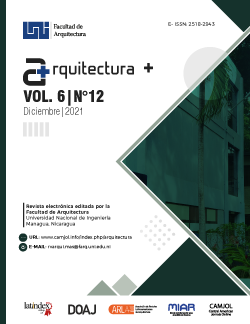Architectural Adaptation in The Historical Centre of Granada, Nicaragua
DOI:
https://doi.org/10.5377/arquitectura.v6i12.13096Keywords:
Adaptation, architecture, historical centre, modifcications, touristic endowmentAbstract
In this paper, association between the provision of tourist equipment and modification of the shape of buildings in historic centres is explained. To develop the aforementioned relation, the historic centre of the city of Granada, Nicaragua was selected as the object of study. Among all gender of buildings, endowment in residential buildings is studied. Subsequently, a sample of buildings that underwent change of use, from housing to tourist facilities, was taken. Architectural spaces that changed their use were analysed, as well as their possible adaptations. These data were ordered and some values were assigned them to later perform probabilistic analyses. It was found that, there is a higher frequency (63.2%) of spaces that underwent formal adaptations when there are tourist provisions. There is a relationship between the change in use of spaces and adaptations, a correlation equal to 77.21%. Results indicates that, when the number of changes in uses in a building increase, also the number of formal modifications rise. This fact is mainly due to tourist activities carried out in the architectural spaces are different from the activities implemented in dwelling. These findings can be useful to guide intervention projects in heritage buildings.
Downloads
Downloads
Published
How to Cite
Issue
Section
License
Copyright (c) 2021 Universidad Nacional de Ingeniería

This work is licensed under a Creative Commons Attribution-NonCommercial-NoDerivatives 4.0 International License.




















